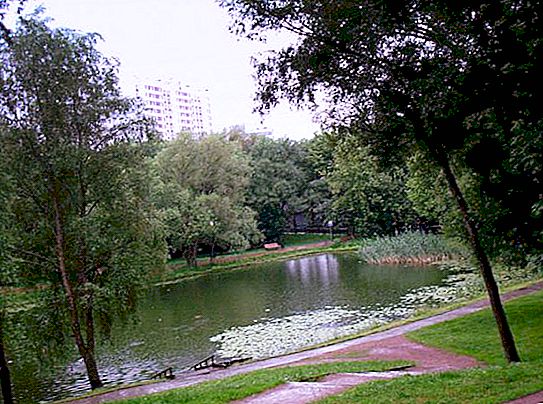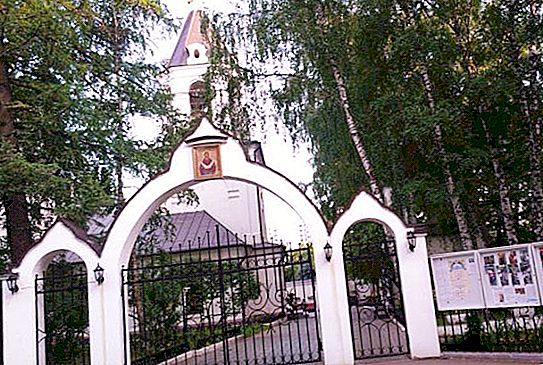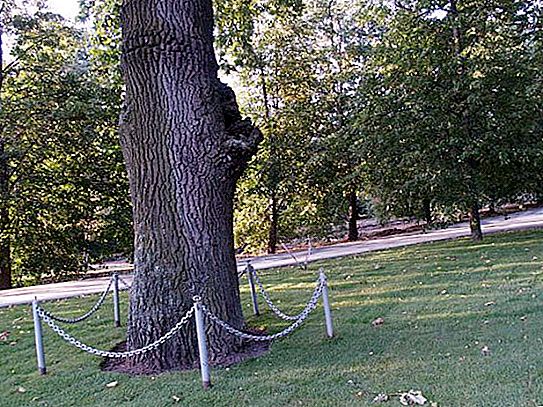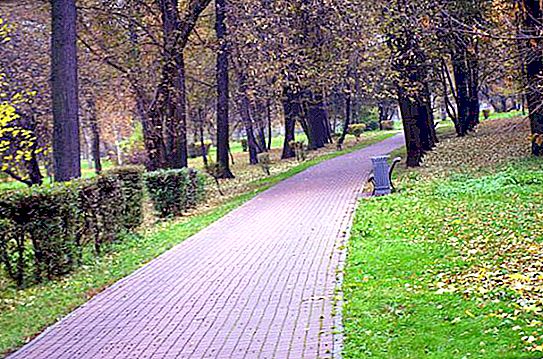Together with large Moscow parks, squares and gardens, the city has less well-known, but no less popular holiday destinations, attracting with their silence, beauty, tranquility and natural atmosphere. One such place is Leonovsky Park or the Garden of the Future Park. What is the history of the park? What are the attractions in it? What awaits the park in the future? Where is the Garden of the Future park located?
Park history
The first mention of Leonovo is found in 1504 in the letter of Ivan III. This land in the 16th century was a wasteland, in the 17th century it was granted to Prince Khovansky, who built a wooden church on this site in 1633. About a hundred years later, in 1722, the wooden structure was replaced by a stone one.
The estate remained in the ownership of Khovansky until 1767, then it was bought by the merchant Demidov P.G. Under him, at the end of the 18th century, an extensive park with rare shrubs and trees and a greenhouse were laid.
In 1825, the owner of the estate was the merchant Kozhevnikov, who practically destroyed the park, and built a cloth factory on its territory.
In the middle of the 19th century, in the village of Leonovo, part of the park was built up with tenement houses. At the beginning of the 20th century, Leonovo became part of Moscow. There was a strong fire and the manor building burned down; Leonovskiy Pond and the Temple have survived from the buildings to our time.

Mass construction began in the area in the middle of the 20th century, but the park was almost untouched, in addition, it received the status of a cultural heritage.
Currently, the manor building has not been preserved. From Leonov’s estate there were: a centuries-old oak, the Yauza river, a linden alley, a pond, the Church of the Deposition of the Robe.
The park attracts tourists here not only for its attractions, but also for its peaceful tranquility, silence, and its picturesque nature.
In 2003, Leonovsky Park was renamed the "Garden of the Future." In 2007, it was reconstructed: all paths, paths were put in full order, information stands were installed, a new series of alleys, “Newlyweds” and “Newborns”, were laid.
Leonovsky temple
On the territory of the Garden of the Future park is located the building of the Church of the Deposition of the Blessed Virgin Mary, which was built on the site of a wooden church in 1722. The construction of the temple is connected with the repentance of Prince Khovansky Vasily for drunken violation of Orthodox rites and a love of alcoholic beverages.
At the time of Demidov, the church was closed from about 1800 to 1860.
After the revolution of 1917, the temple was transferred to the management of parishioners. It is unique and exclusive, since it was never closed during the Soviet era. The temple continued to be active throughout its subsequent history of existence.

Currently, a Sunday school operates at the church, and a church library is located on the territory. It has its own granite workshop, which is engaged in the manufacture of tombstones.
Description of the park
To this day, from the heritage of the Leonovo estate complex, there are: linden alley, Leonovsky pond, centuries-old oak, Yauza river, temple. In Soviet times, a bridge was built across the ravine, and in 2007 the alleys of the "newlyweds" and "newborns" and a flower garden were created.
The linden alley is a great place for walks or gatherings on the bench, it is especially pleasant here during the flowering of lindens. The air is filled with aroma that can not be compared with anything.
The attraction of the Park of the Future is the centuries-old oak. This is one of the oldest oaks in Moscow, its age is about 300 years, it is included in the program “Oaks-patriarchs”.

Notable here are a river, a pond, a flower garden, a bridge over a ravine.
The park is often visited by parents with children and newlyweds, it is ideal for both walks and romantic dates.
Park Reconstruction Plan
In 2007, the park was partially landscaped and put in order, but the following years it was not looked after. The tracks became completely abandoned and were in terrible condition. The territory of the park is overgrown and became groomed. The Government of Moscow in 2016 decided to equip and put in order the "Garden of the Future."
Reconstruction began in July 2017. Architects and landscape designers were faced with the task of restoring the structure and appearance of the park in accordance with its appearance in the 18-19 centuries. To do this, they used historical maps and archival photos. Work should be completed at the end of September 2017.
Citizens and guests of the capital will be able to stroll along the updated ancient linden alley, sit near the Leonovsky personal pond.

A garden with a playground will appear on the territory of the park, a ground flower garden will be recreated, a fountain will be built.
Children will be able to play in the playgrounds, and sports enthusiasts will be able to cycle along the bike path and improve their health on the grounds with exercise machines.
Park paths will be tiled.
At the end of the reconstruction of the Garden of the Future Park, about 160 new trees and 600 bushes will be planted in the Botanical Garden of the park. It is planned to create 1, 800 m 2 of flower beds and 168 thousand m 2 of lawns.
About 340 lampposts and 60 video surveillance cameras will be installed in the park.




